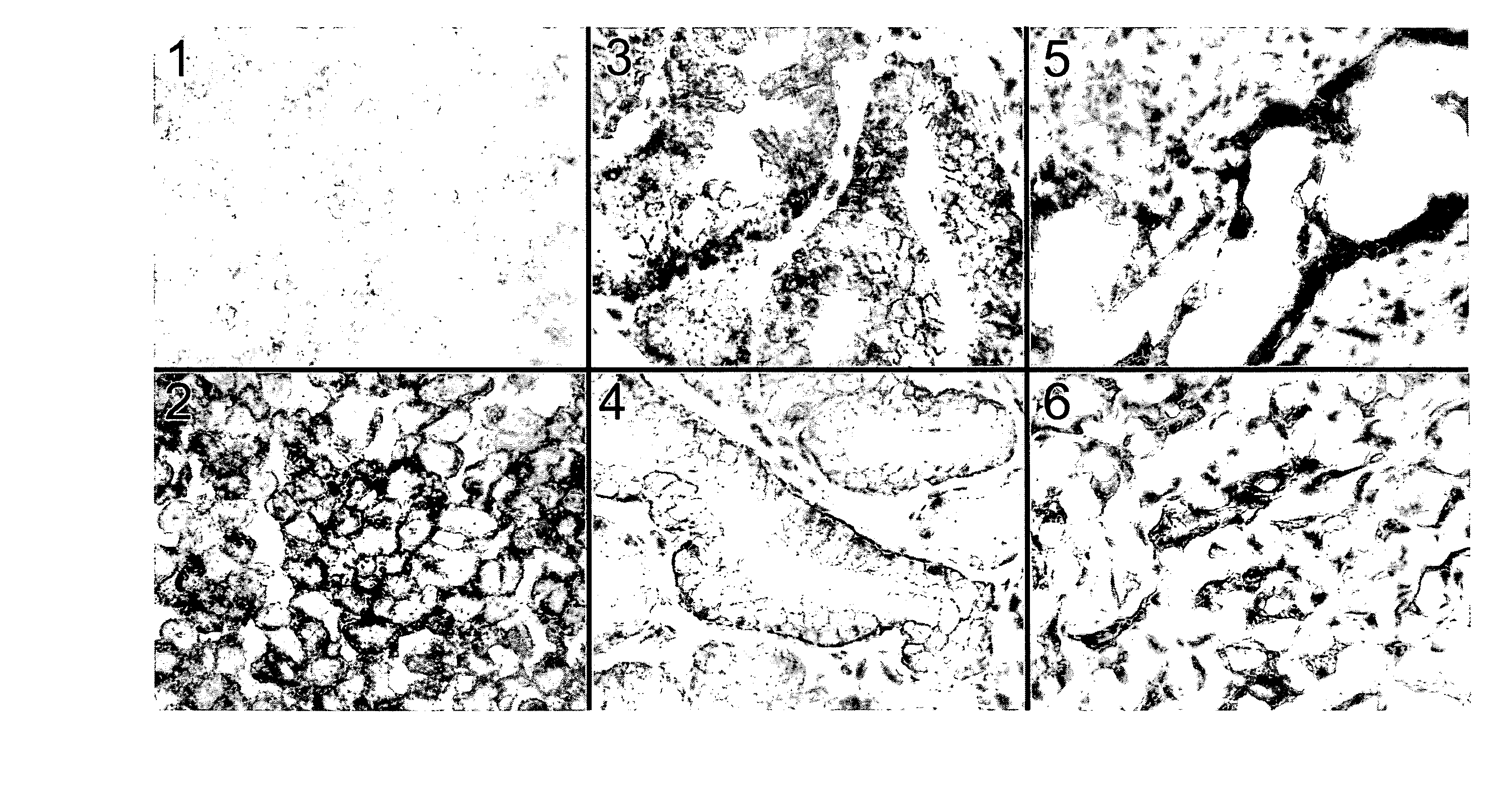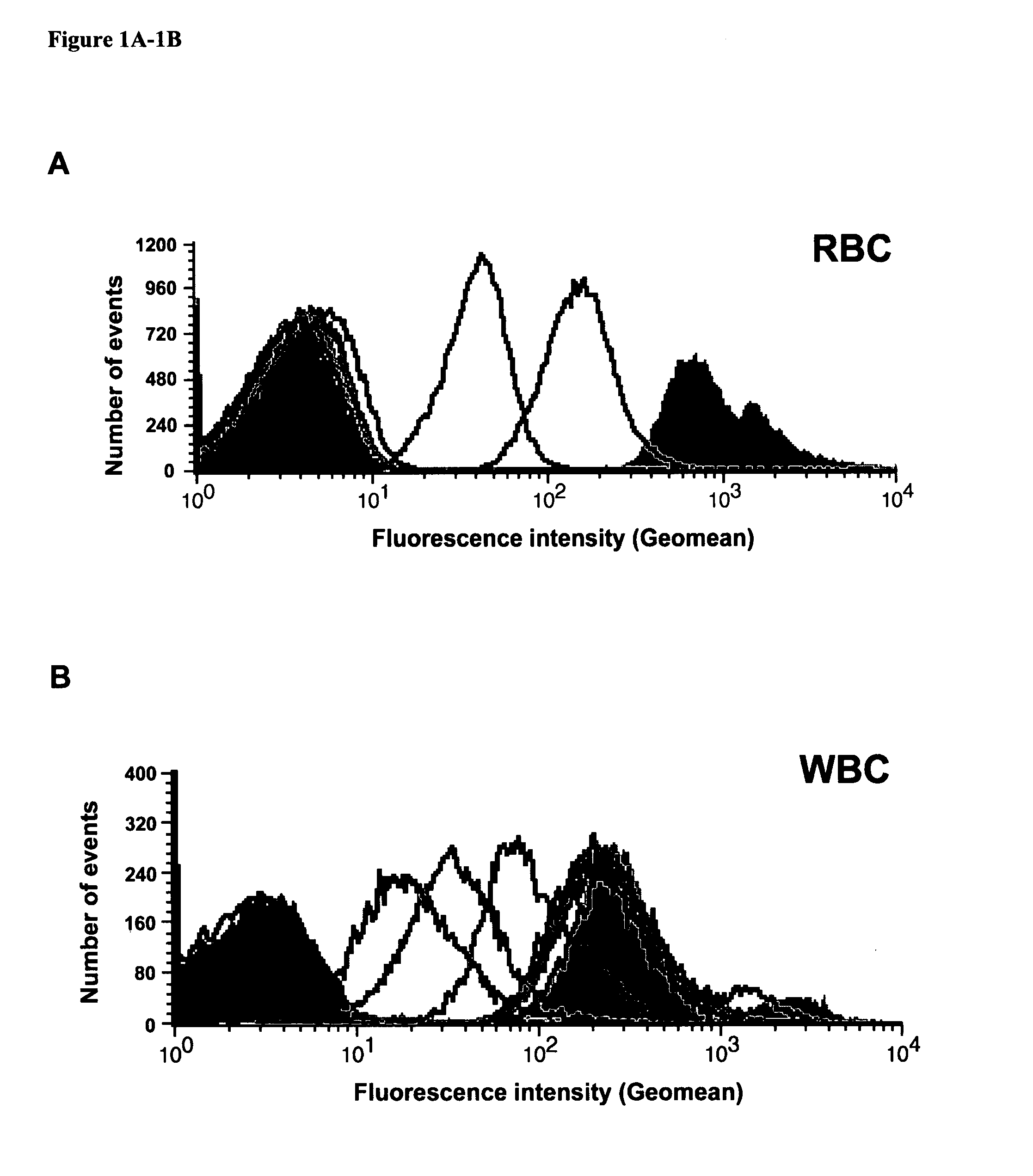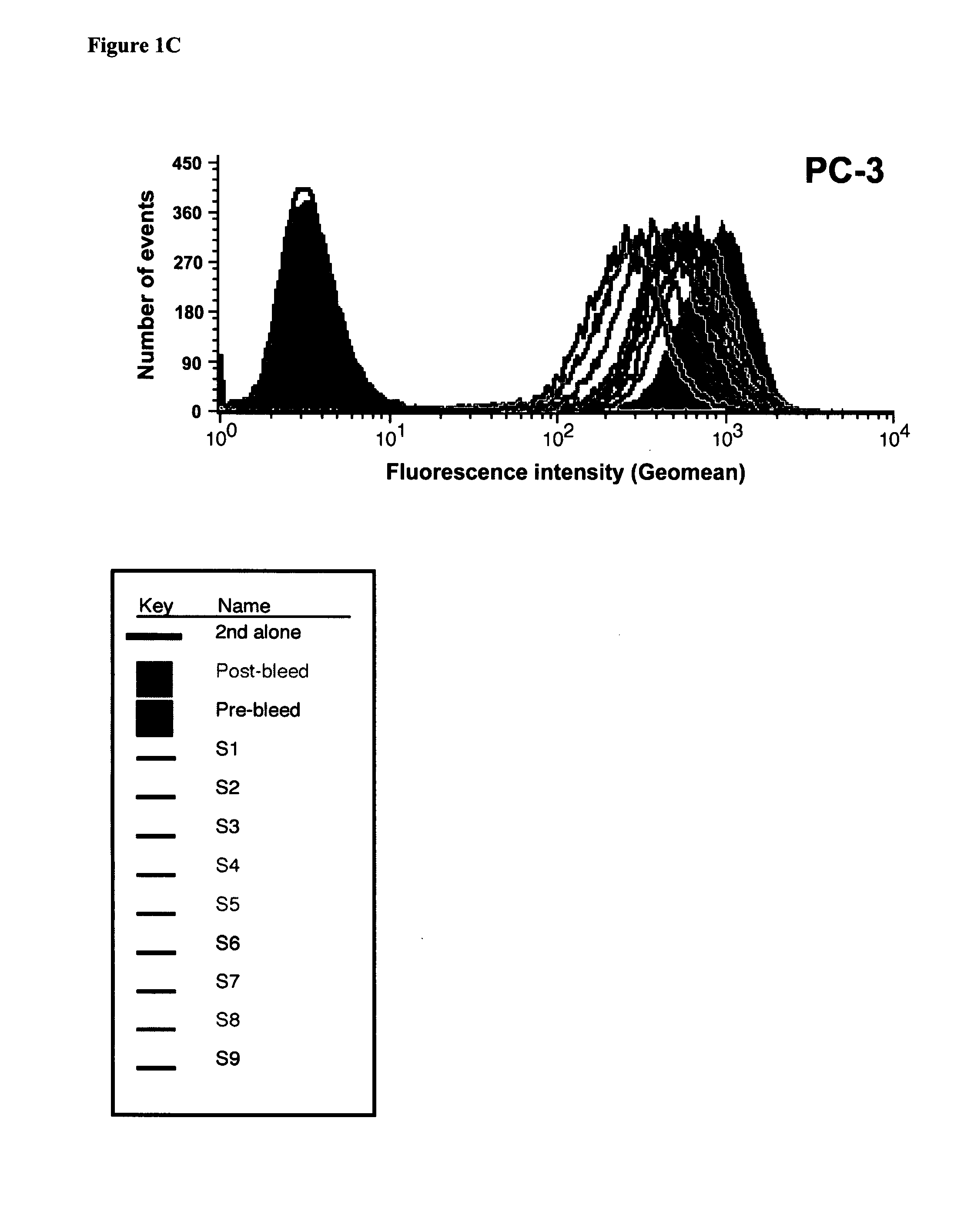Methods and compositions for the treatment of prostate cancer
a prostate cancer and composition technology, applied in the field of prostate cancer compositions and methods, can solve the problems of difficult approach, difficult screening of tumor specific antibodies, and inability to detect tumor specific antibodies, and achieve the effects of increasing effector function, increasing effector function, and increasing antibody-dependent cell-mediated cytotoxicity
- Summary
- Abstract
- Description
- Claims
- Application Information
AI Technical Summary
Benefits of technology
Problems solved by technology
Method used
Image
Examples
example 1
Cross-Reactivity of Antisera Derived from Human Cancer Cell Line Immunized Animals to RBCs and WBCs
[0120] Individual mice were immunized with one each of eight cancer cell lines, representing six different types of solid tumors. To evaluate murine immune response, binding of each antiserum (pre- and post-bleed) to the immunizing cancer cell line was compared to binding to human RBCs and WBCs by flow cytometry. As expected, antisera showed strong binding to the immunizing cancer cells (Table 1). However, these antisera also showed very strong binding to human RBCs and WBCs. In all cell lines (8 / 8) the binding of the antisera to RBCs is stronger than binding to the immunizing cancer cells. In half of the cell lines (4 / 8), binding of antisera to WBCs is stronger than binding to cancer cells.
TABLE 1Flow cytometric analysis of binding of anticancer sera to cancer cells and human blood cells. The average fromall animals per cell line is depicted in terms of geomean fluorescence intensi...
example 2
Binding of Antisera to RBCs, WBCs and Cancer Cells after Blood Cell Subtraction
[0121] To determine whether it would be possible to select for tumor specificity by quantitatively depleting antibodies that bind to RBCs and WBCs, one PC-3-immunized mouse was randomly chosen for serum subtraction. PC-3 antiserum was subtracted with RBCs six times (Subtraction S1 to S6) and WBCs three times (S7 to S9) as described in the methods. Prior to subtraction, the PC-3 post-bleed antiserum from the selected mouse had about 250-fold higher binding to human RBCs than the pre-bleed antiserum. After four rounds of RBC subtraction, PC-3 antiserum binding to RBCs was completely depleted (FIG. 1A). Similarly, after three additional rounds of WBC subtraction, the binding of the subtracted PC-3 anti-serum to WBCs decreased from 112-fold (post-bleed) to only 7-fold higher than the pre-bleed (FIG. 1B).
[0122] Although subtraction of the antiserum with RBCs and WBCs was effective in decreasing undesirable b...
example 3
Comparison of PC-3 Whole Cell Panning with and without RBC Subtraction
[0126] In order to extend the results obtained using stringent negative selection of antisera on blood cells to a phage-displayed antibody library, we built a combinatorial antibody library from a PC-3 immunized mouse and compared the outcomes of whole-cell panning processes done with two methods of normal prostate cell (PrEC) subtraction, either with or without RBC subtraction (Table 2).
TABLE 2Selection Parameters and Screening Results FollowingPanning Rounds with or without RBC subtractionRatio ofCellphage input% PrEC (−) of% RBC (−) ofPanRound (R)Cellsnumberto cellPC-3 bindersPC-3 bindersWithoutR1PC-37.5 × 1061.4 × 106NDNDRBCSubtraction (12 h × 2)PrEC8.0 × 1062.5 × 105NANASubtractionR2PC-37.5 × 1061.3 × 10560.0NDR3PC-33.8 × 1062.6 × 10634.00With RBCR1PC-37.5 × 1061.4 × 106NDNDSubtractionSubtraction (1 h × 3)RBC5.4 × 109700NANASubtraction (2 h × 2)PrEC3.75 × 106 3.2 × 105NANAR2PC-37.5 × 1062.2 × 10525.025.0R3...
PUM
| Property | Measurement | Unit |
|---|---|---|
| wavelengths | aaaaa | aaaaa |
| wavelengths | aaaaa | aaaaa |
| concentrations | aaaaa | aaaaa |
Abstract
Description
Claims
Application Information
 Login to View More
Login to View More - R&D
- Intellectual Property
- Life Sciences
- Materials
- Tech Scout
- Unparalleled Data Quality
- Higher Quality Content
- 60% Fewer Hallucinations
Browse by: Latest US Patents, China's latest patents, Technical Efficacy Thesaurus, Application Domain, Technology Topic, Popular Technical Reports.
© 2025 PatSnap. All rights reserved.Legal|Privacy policy|Modern Slavery Act Transparency Statement|Sitemap|About US| Contact US: help@patsnap.com



